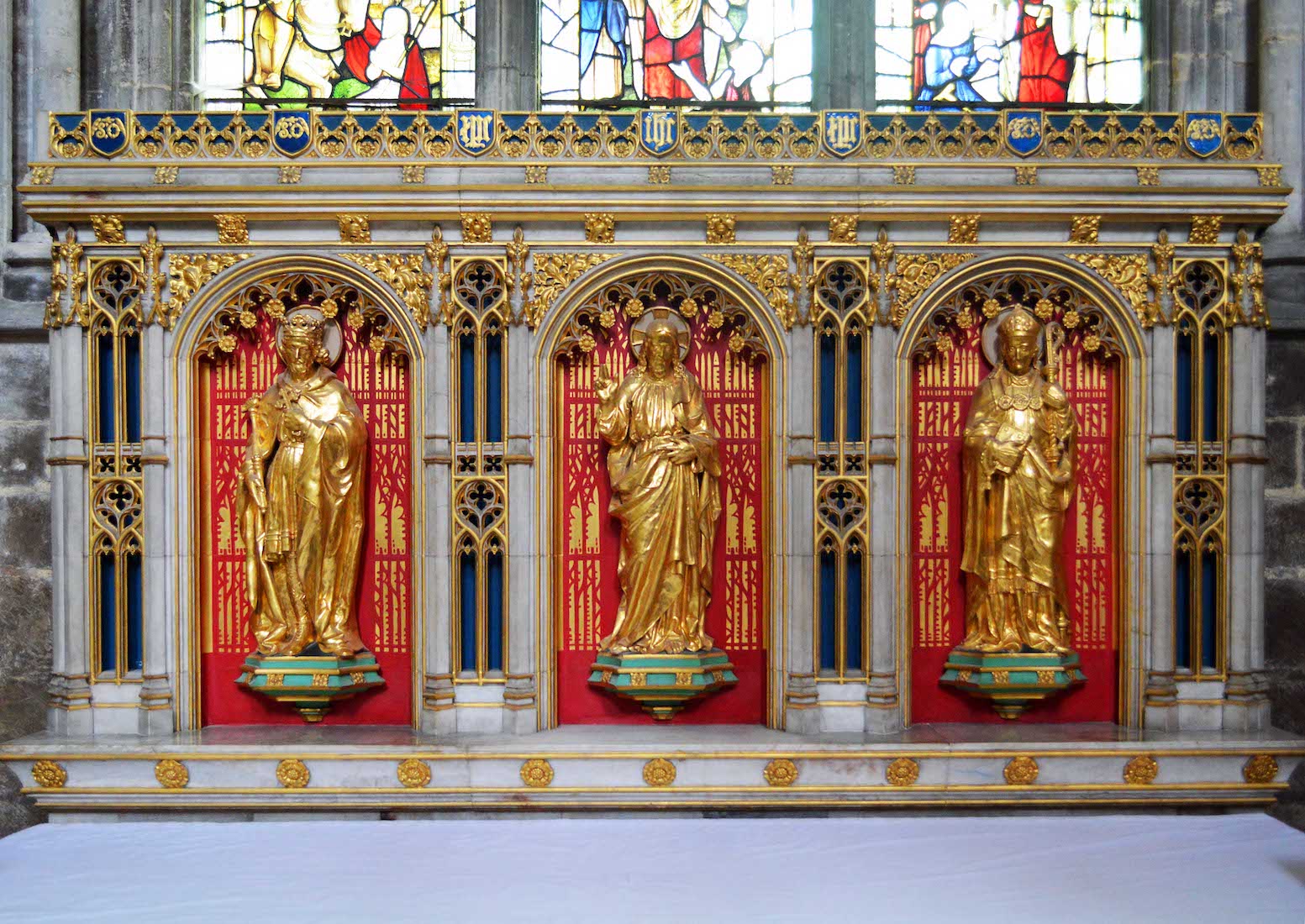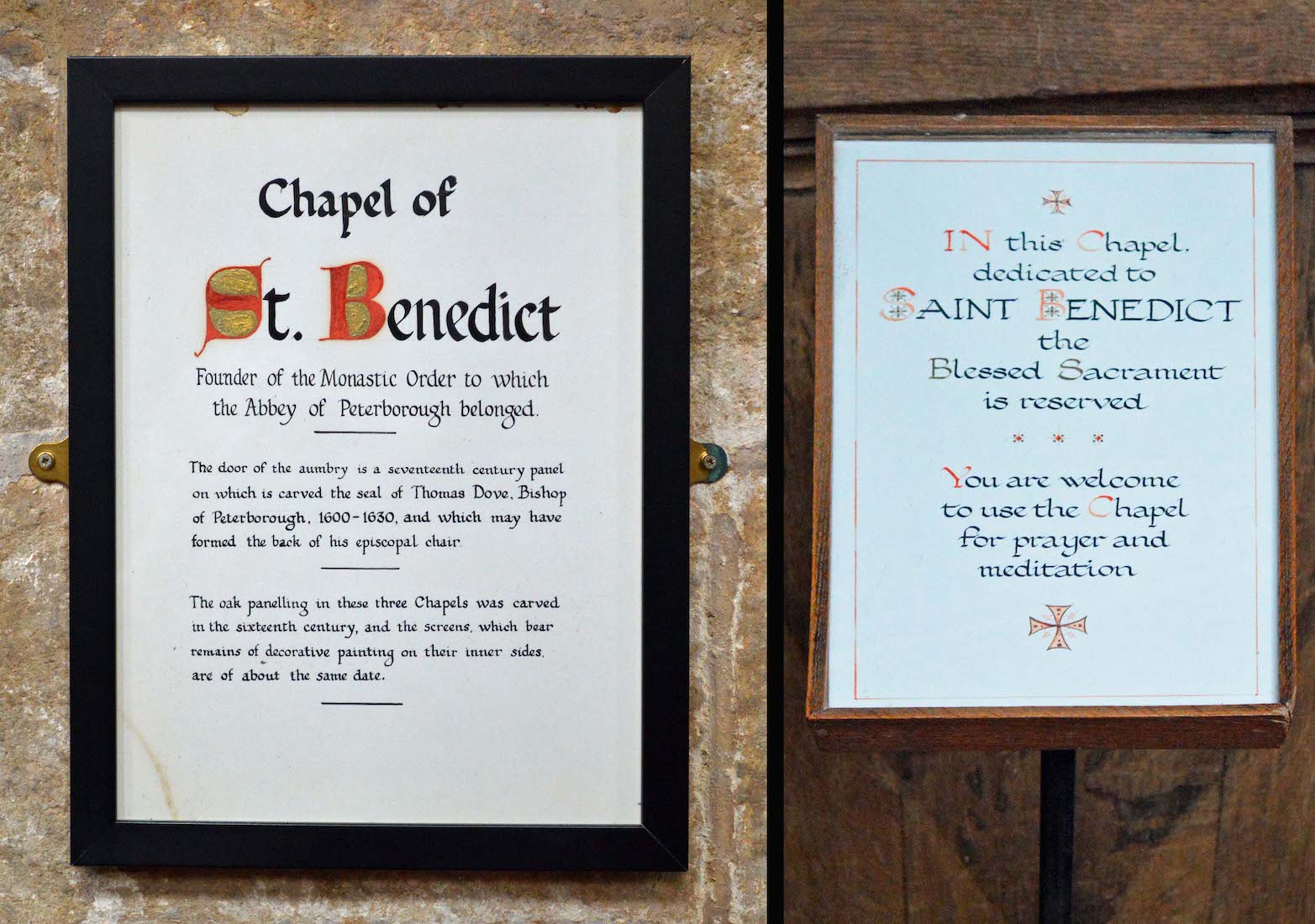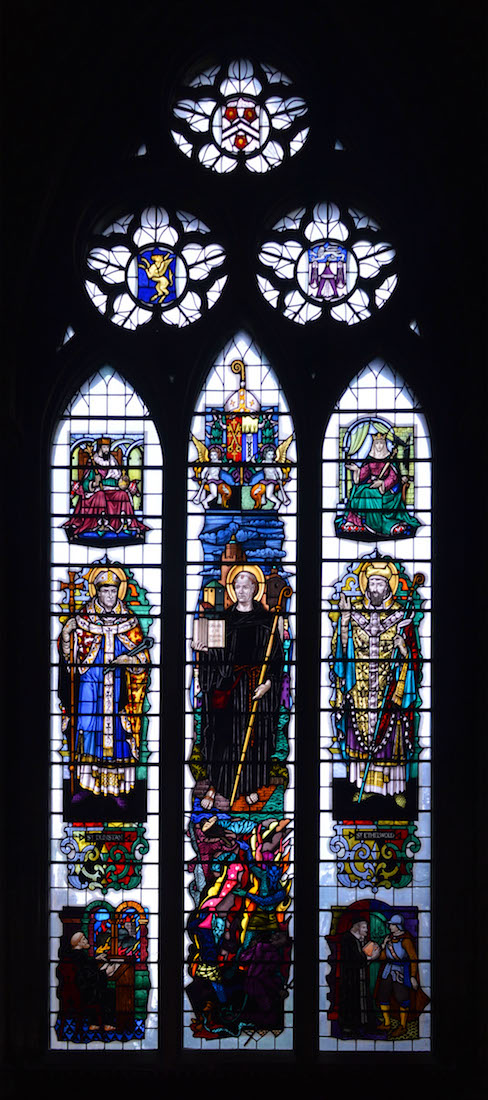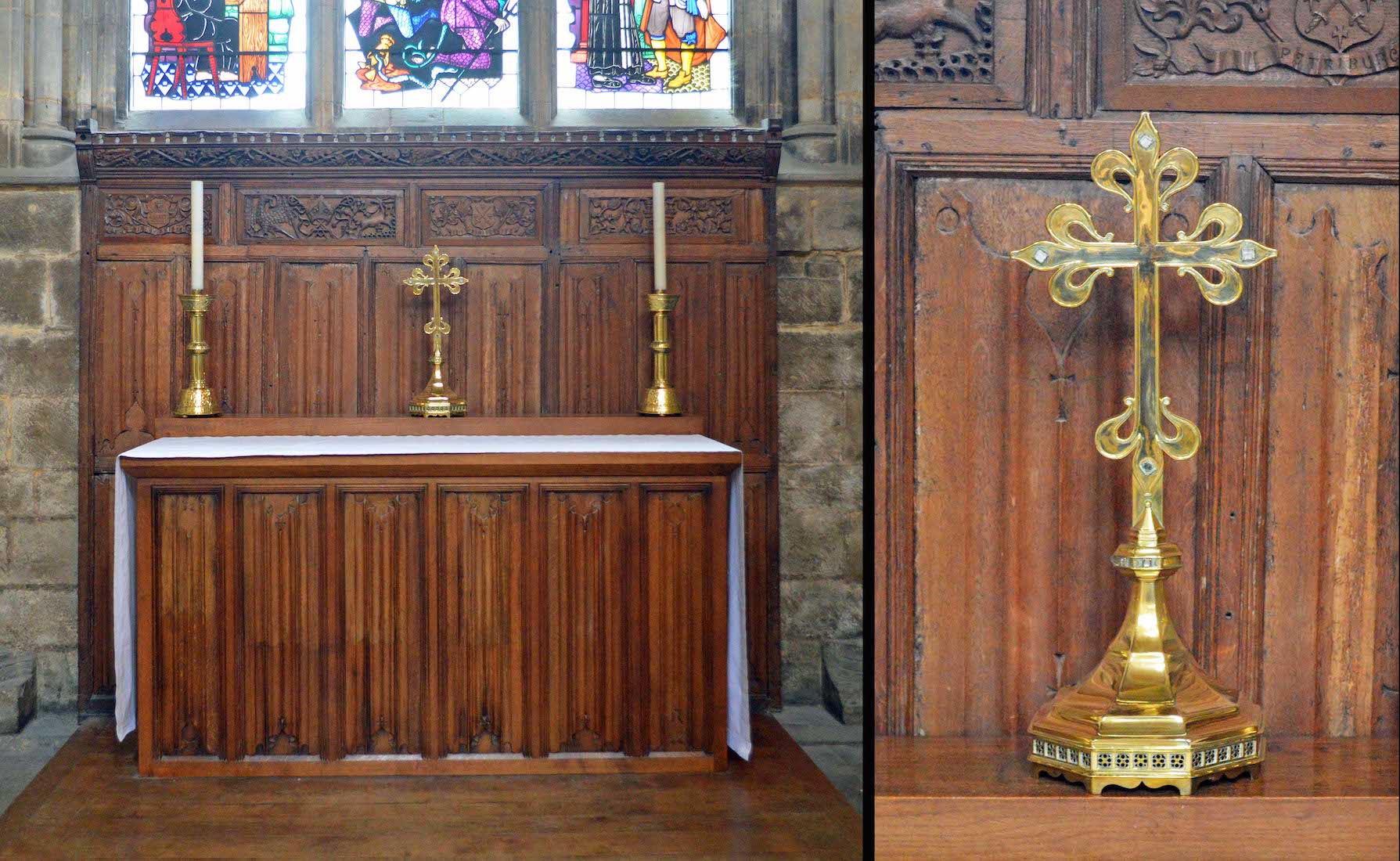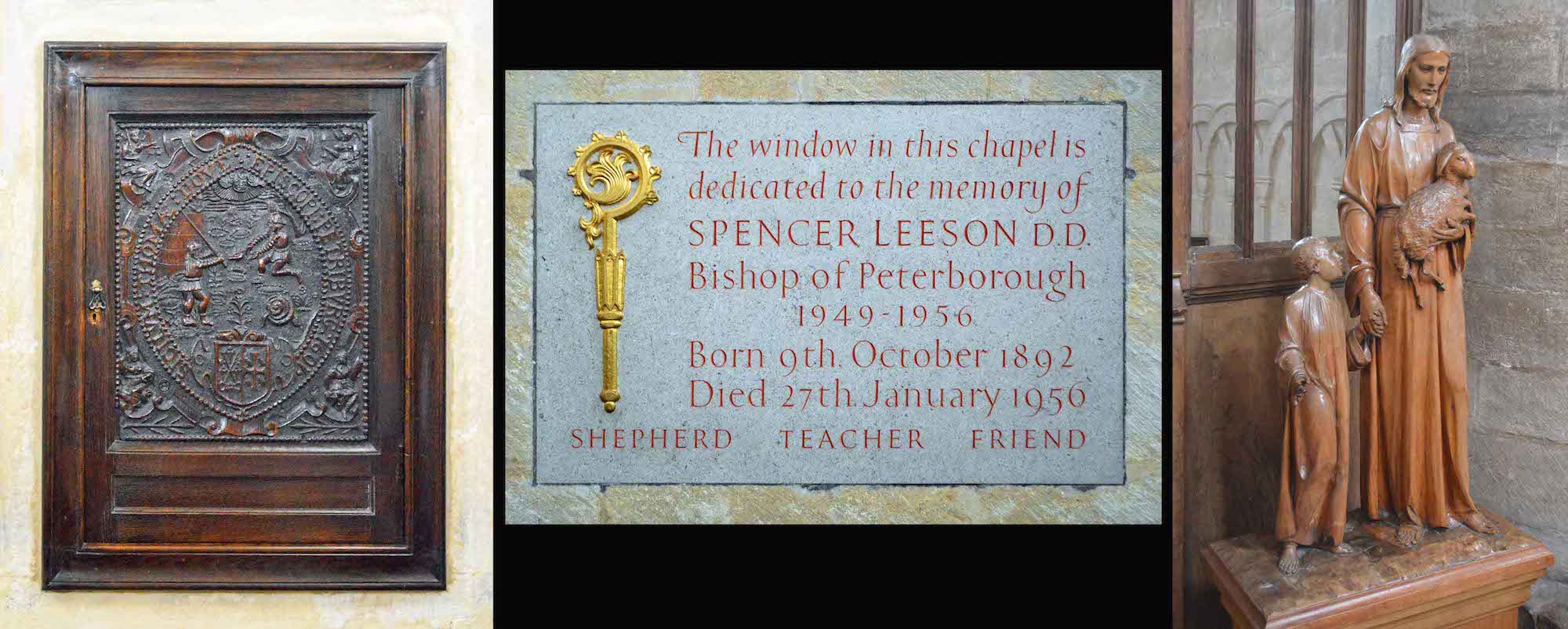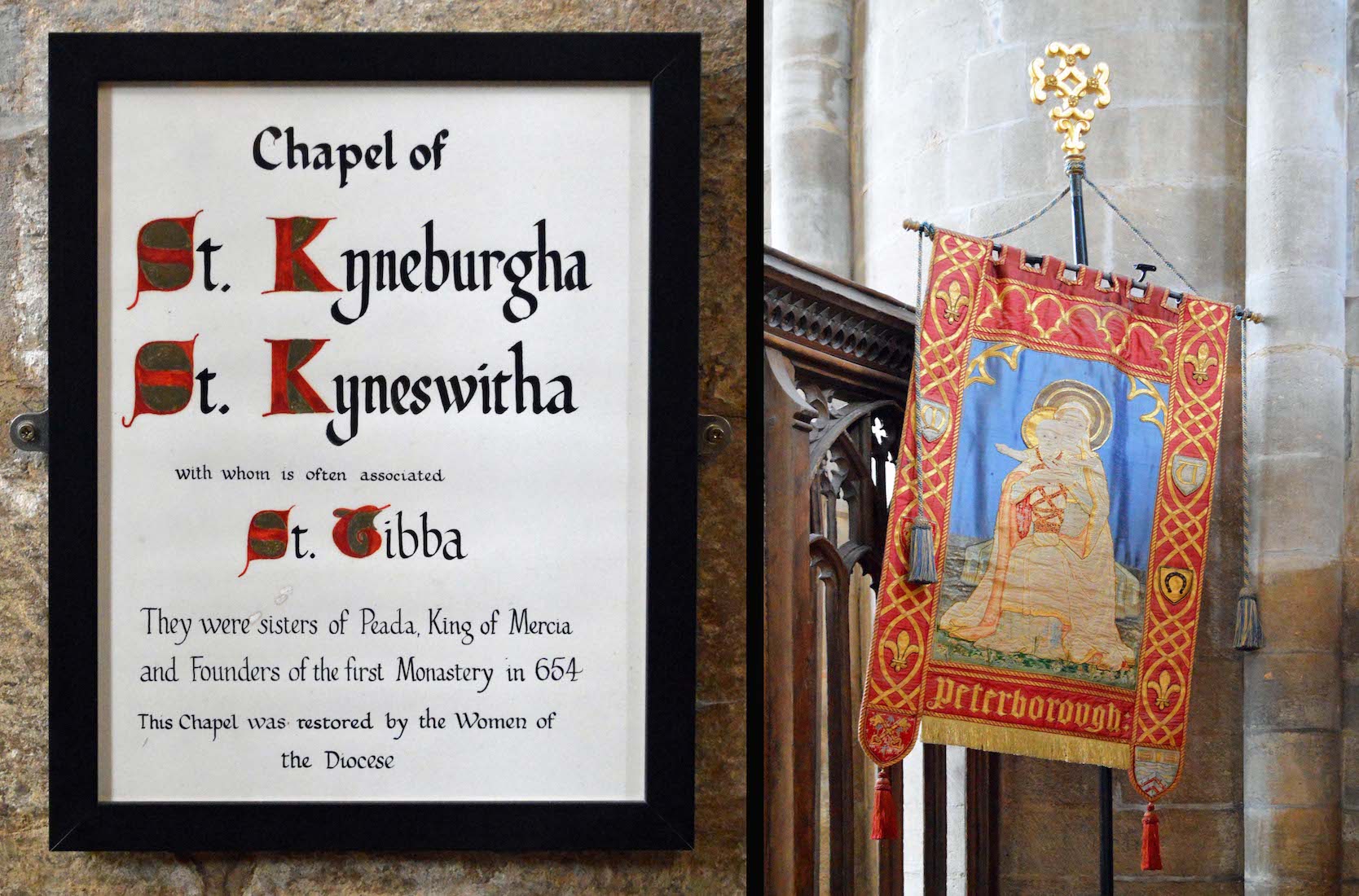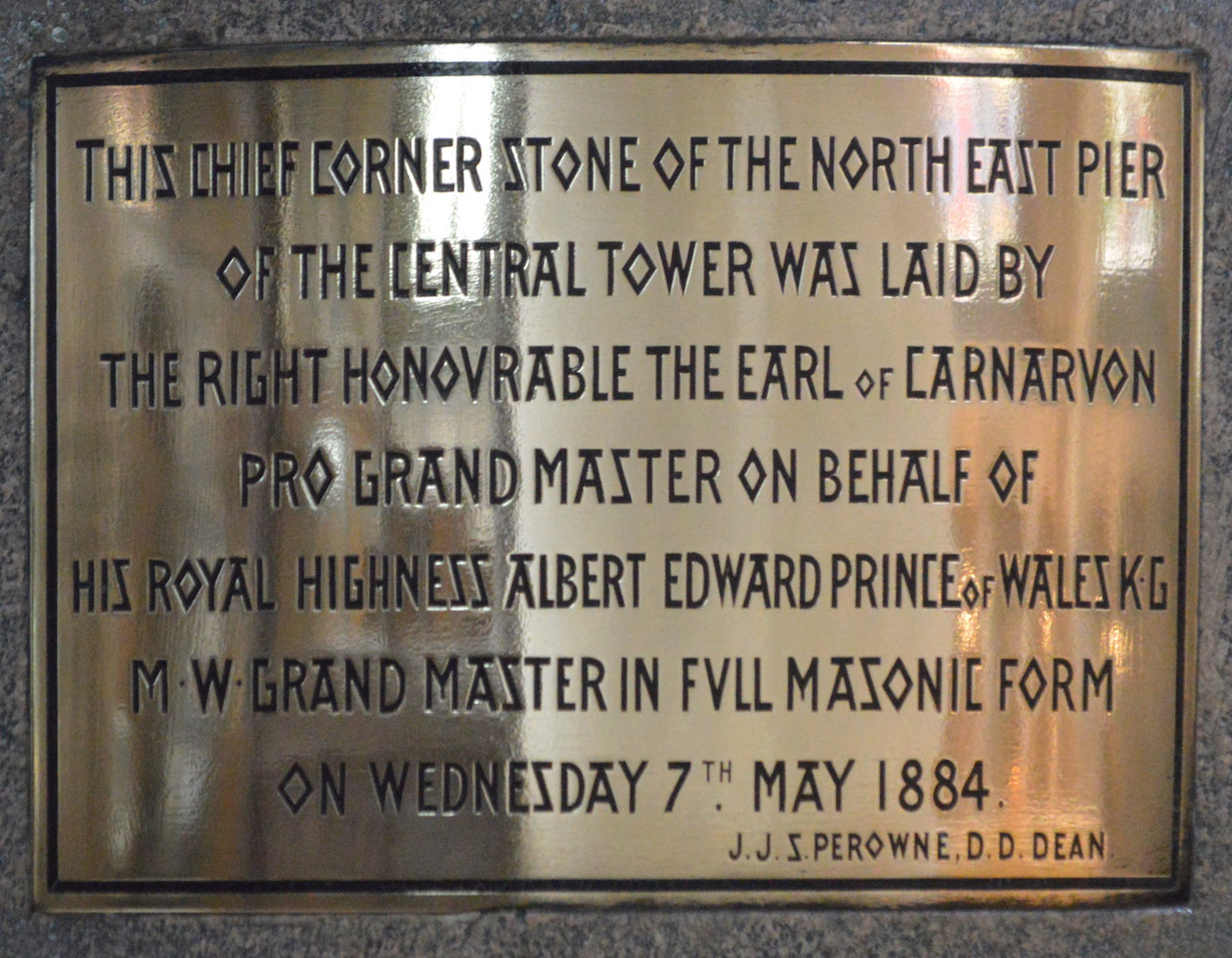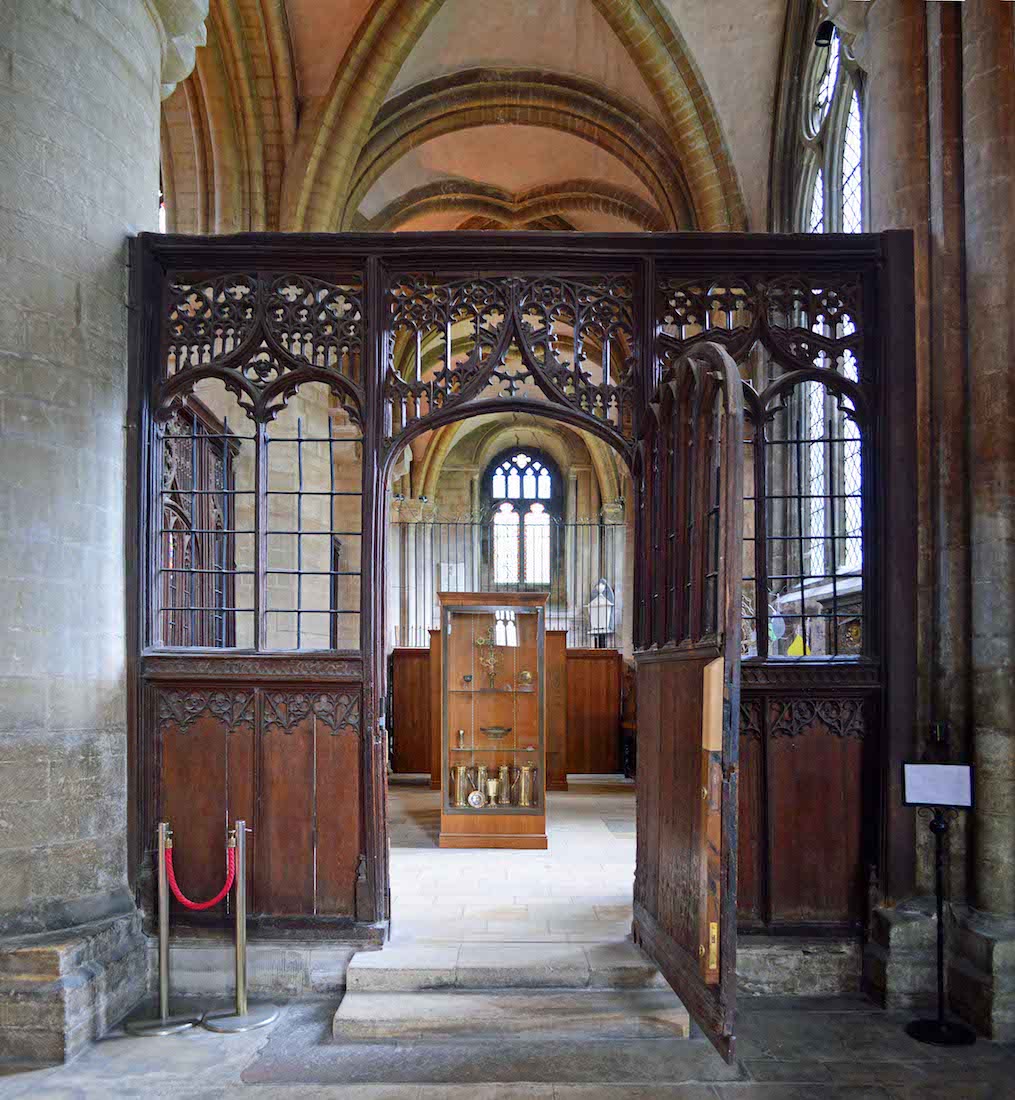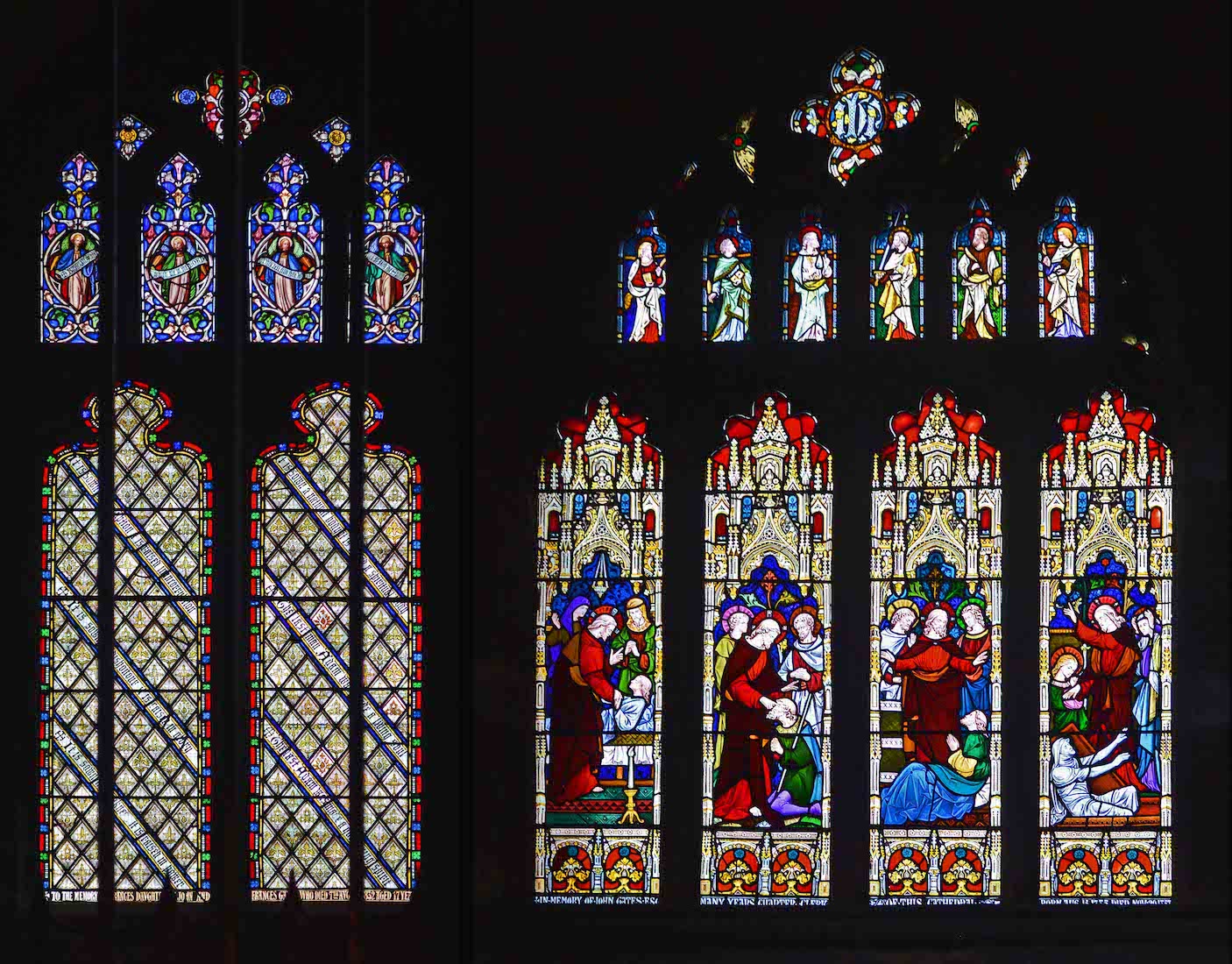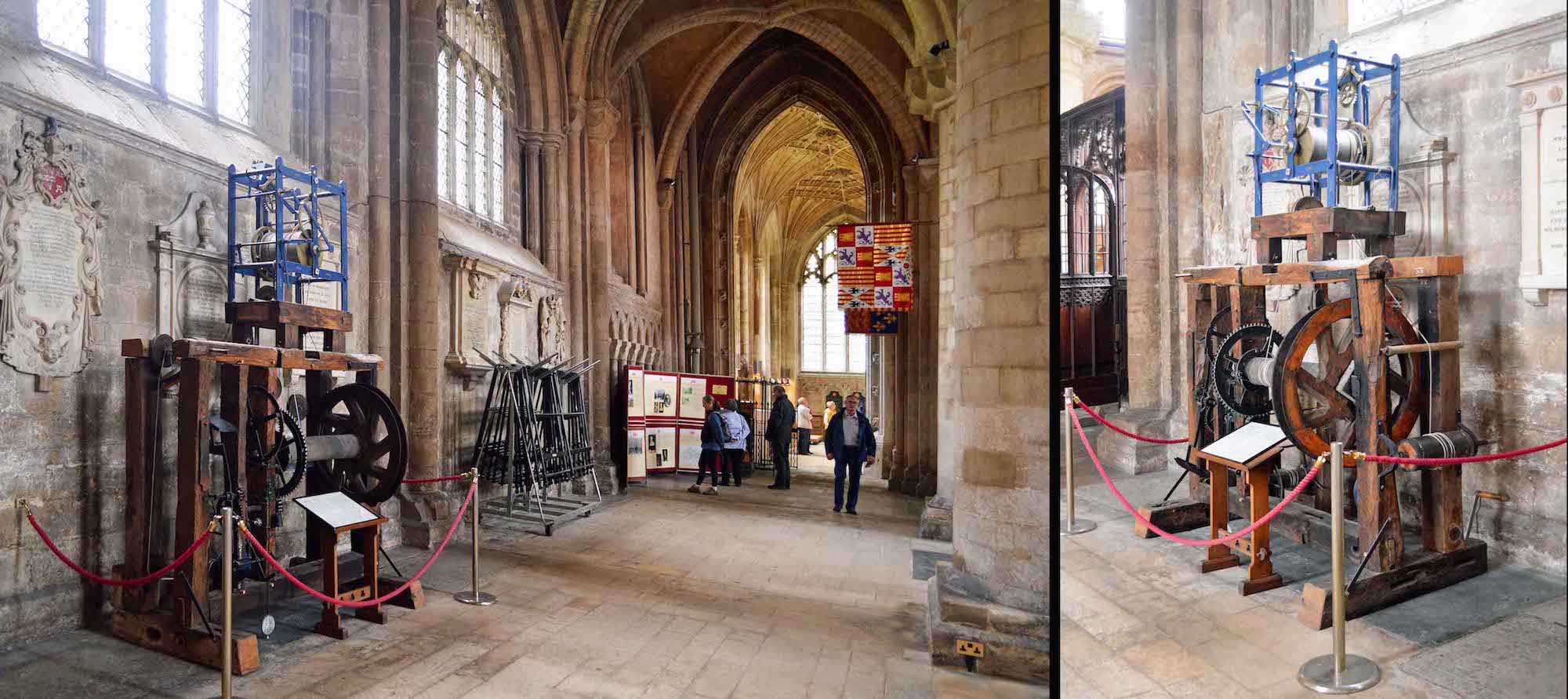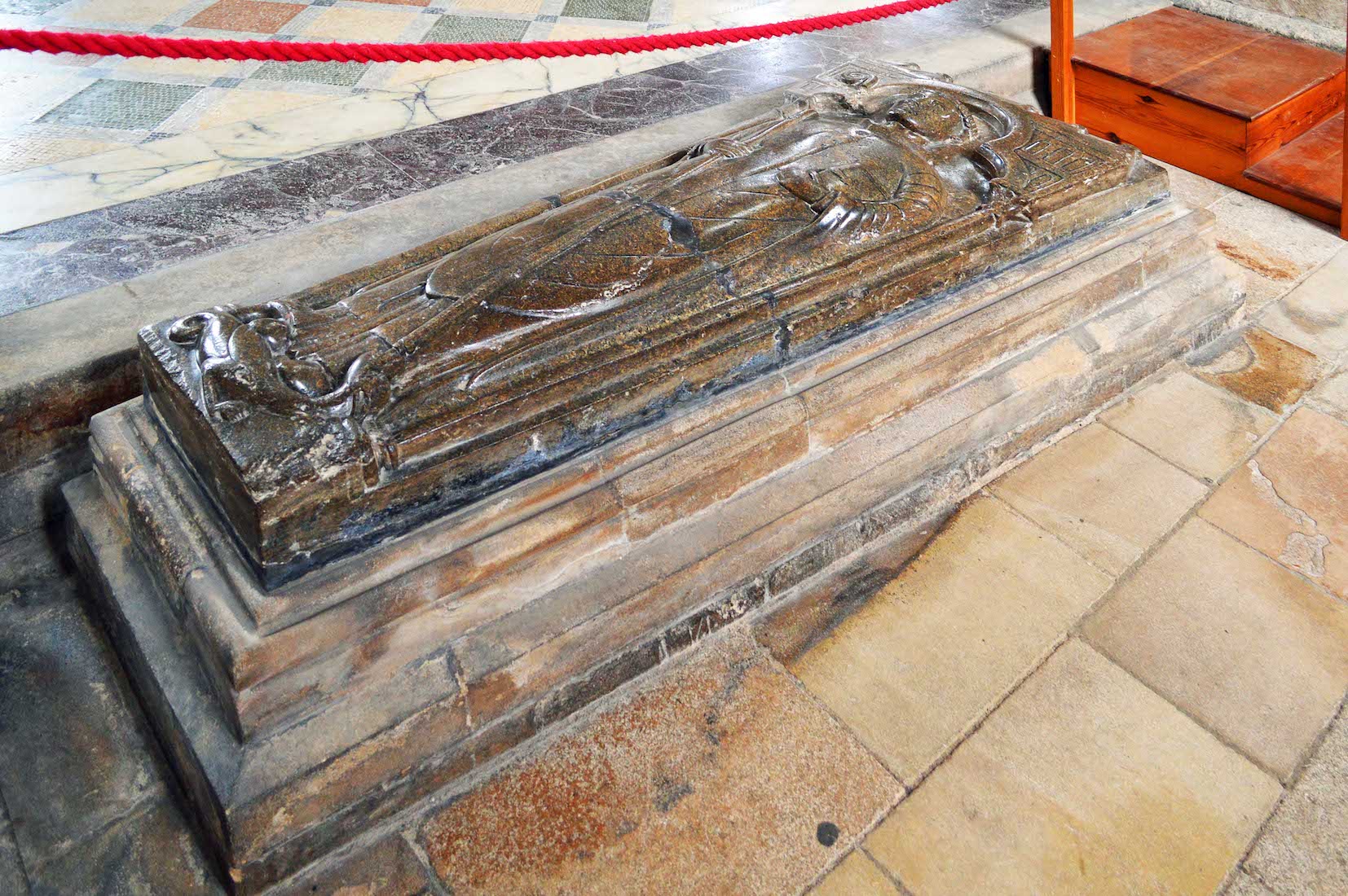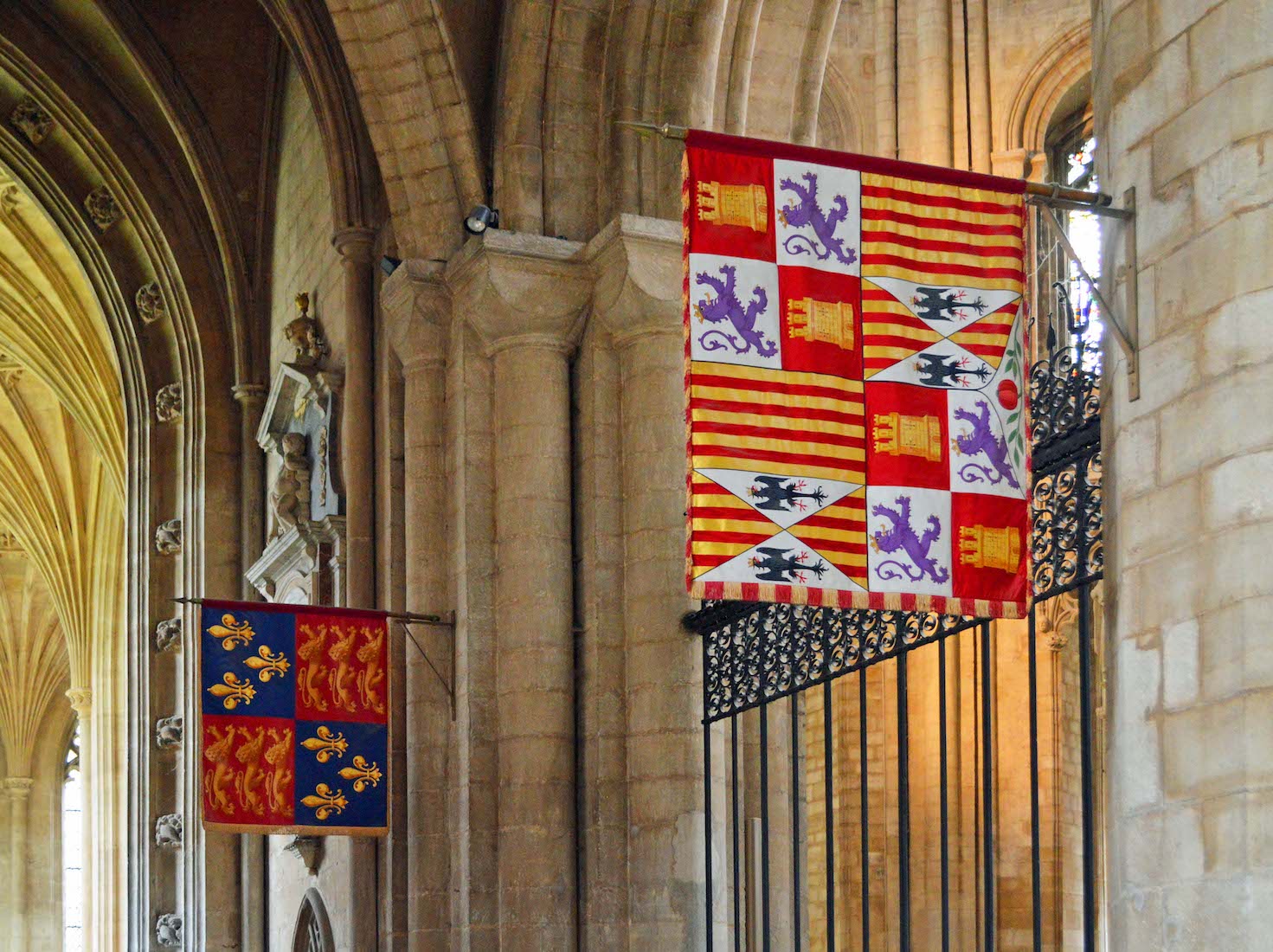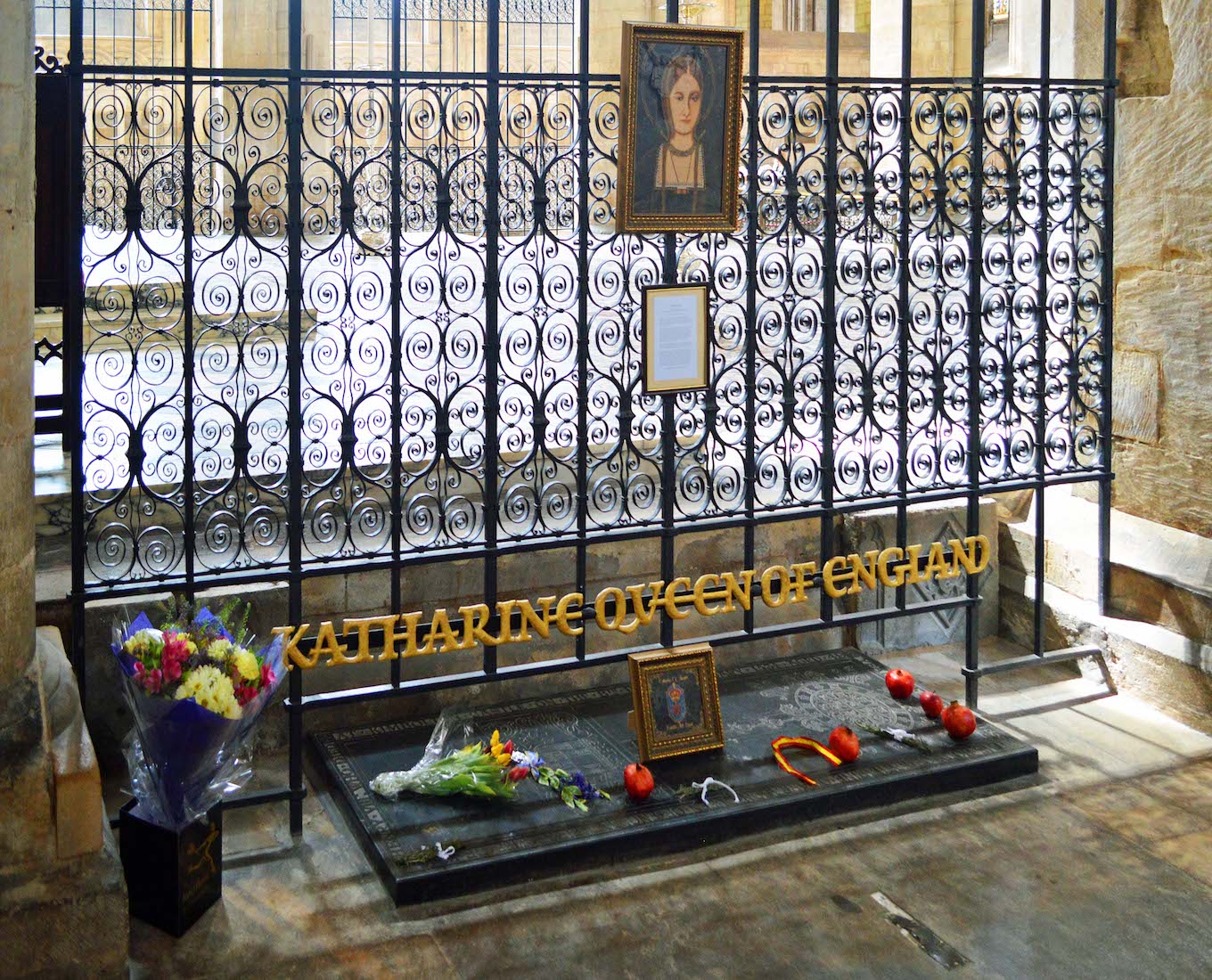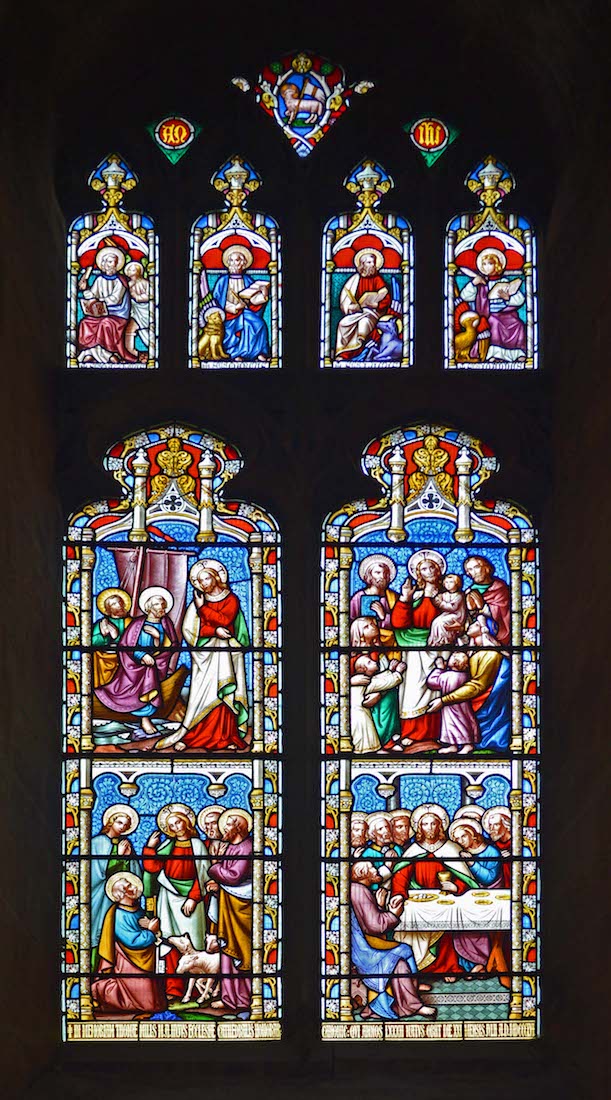61. SOUTH TRANSEPT, SOUTH WEST CORNER
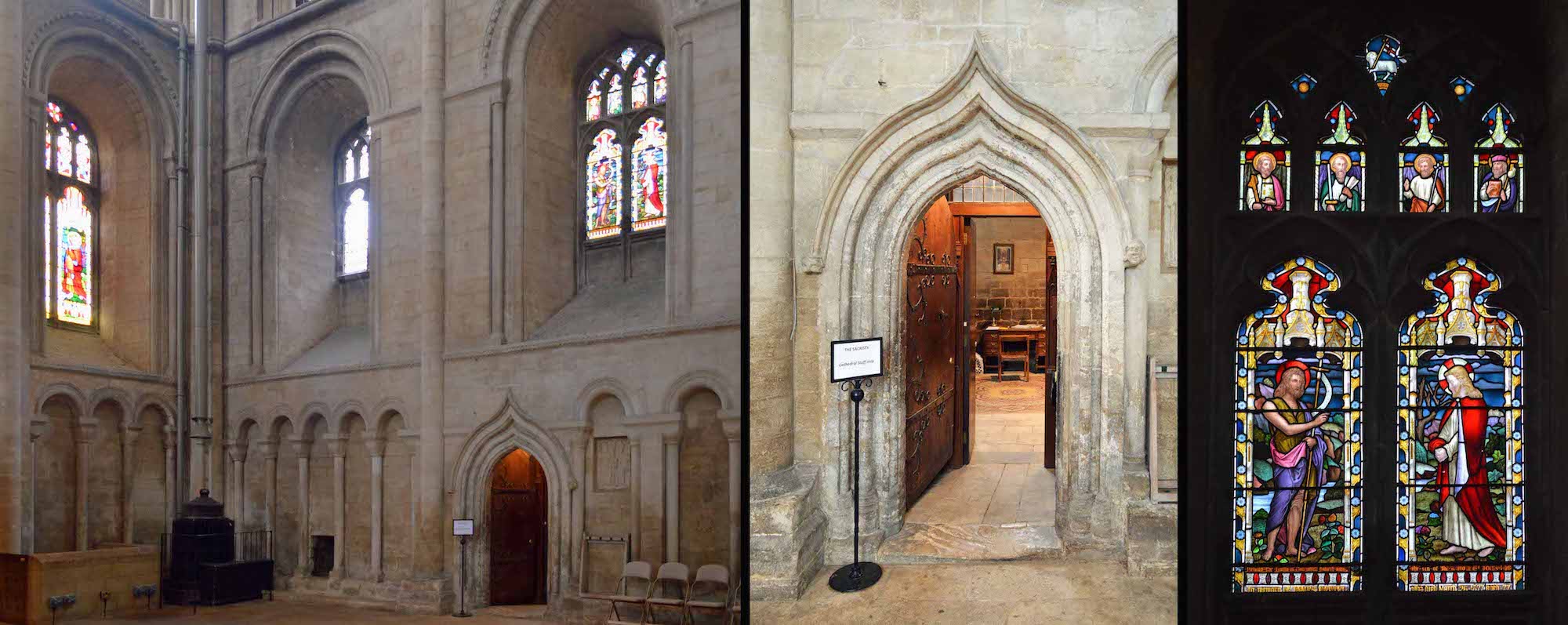
The photo at left places the sacristy door and the window above it. The sacristy is a private area where priests prepare before a service. The window shows John the Baptist and Jesus. John is saying: ‘Behold the Lamb of God who takes away the sin of the world.’ PLAN
62. ST OSWALD CHAPEL
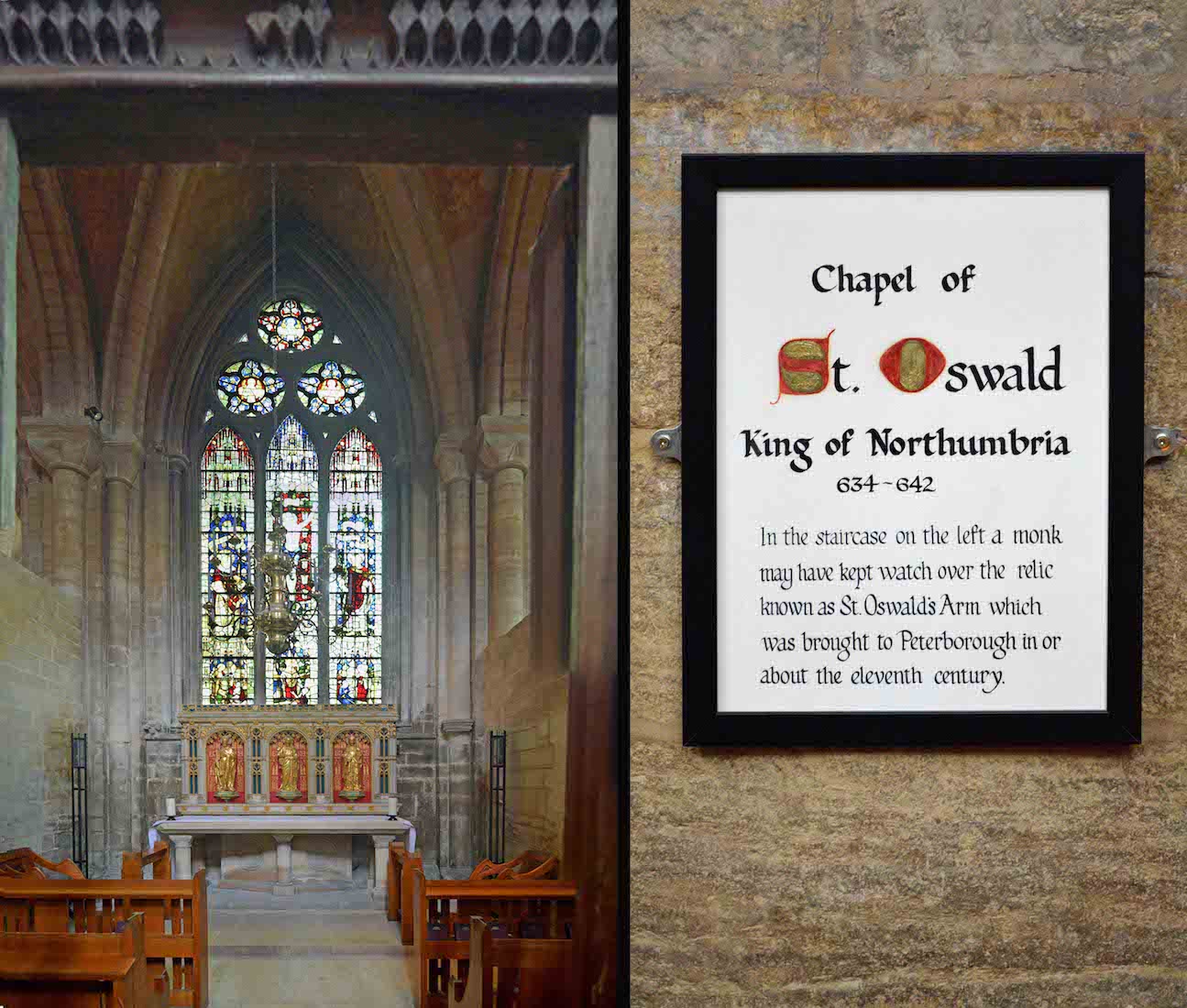
On the East side of the South transept there are entryways to three chapels. The Northern-most one is St Oswald’s Chapel. St Oswald was King of Northumbria from 634 – 642. Through the door we see the chapel window with the ornate altar in front.
63. ST OSWALD CHAPEL REREDOS
The figures on the Chapel reredos from left are perhaps: St Oswald, Christ, and Oswald’s chaplain, Bishop Aidan. Oswald was renowned for his Christian generosity, and legend has it that Bishop Aidan blessed him saying, ‘may this arm that has been so generous never perish’. In 642 Oswald was killed in battle, but his arm remained uncorrupted by the passage of time. Around 1000, a monk from Peterborough stole the arm and it was kept in the chapel, but by 1539 it had disappeared.
64. ST OSWALD CHAPEL WINDOW
The central figure in this window is the Crucified Christ. Two saints stand alongside. The saint on the right is St Crispinus.
65. ST BENEDICT CHAPEL
The middle chapel on the East wall of the South transept is St Benedict’s Chapel. Benedict of Nursia (c. 480 – 543 or 547) was the founder of the order to which the Abbey of Peterborough belonged. Benedict is a Christian saint, who is widely venerated. Benedict's main achievement is his ‘Rule of Saint Benedict’, containing precepts for his monks.
66. ST BENEDICT WINDOW
The central figure in this window is St Benedict of Nursia. He is shown holding a book containing his ‘Rule’, and a pastoral staff.
67. ST BENEDICT CHAPEL ALTAR
St Benedict’s Chapel contains a simple altar bearing a cross and two candlesticks. There are some intricate little carvings on the panel beneath the window, and the cross itself is unusual, consisting of four ‘fleurs-de-lis’. The panelling was carved in the sixteenth century.
68. AUMBRY, DEDICATION, SCULPTURE
The door of the aumbry is a seventeenth century panel on which is carved the seal of Thomas Dove, Bishop of Peterborough 1600-1630. It may have formed the back of his episcopal chair. The window dedication is in memory of Spencer Leeson, Bishop of Peterborough 1949 – 1956. The wooden carving of Jesus with a lamb and a child stands outside the St Benedict Chapel.
69. CHAPEL OF ST KYNEBURGHA AND ST KYNESWITHA
These two saints were sisters of King Paeda of Mercia, and founders of the first monastery at Peterborough in 654. St Tibba is the patron saint of falconers, and lived about the same time.
70. CHAPEL INTERIOR
The furnishings of this Chapel are very simple, as if for children. There is also a beautiful sculpted depiction of the Annunciation.
71. PILLAR PLAQUE
We now leave the chapels and the South transept, and make our way to the crossing. This plaque on the Northeast pier of the central tower tells us that this cornerstone was laid by the Earl of Carnarvon on behalf of His Royal Highness Albert Edward, Prince of Wales, in 1884. This was the beginning of the rebuilding of the tower, after the old tower had been condemned as unsafe.
73. TREASURY DISPLAY
The Treasury contains some old manuscripts along with a selection of silver and gold chalices. A cathedral often becomes the centre where valuable pieces from the past are brought together from churches in the diocese.
74. WINDOWS
Two windows are shown here. The one at the left is the North window to the corner vestry. The four angels at the top carry the text: ‘Blessed are they which die in the Lord. They rest from their labours. Thus says the Spirit.’ The right window is the East window to the Treasury itself. It depicts four scenes from the healing ministry of Jesus.
75. NORTH PRESBYTERY AISLE CLOCK
Leaving the Treasury, we proceed Eastwards along the North presbytery aisle. We come first to this old clock. This was known to be the oldest working clock mechanism in the world until 1950 when it was replaced. The striking train, housed within the main wood frame, is thought to date back to 1350. However, in the considered opinion of Michael Lee, who undertook its restoration after it was removed from the tower in 1986, it is more likely to date back to 1450. This would coincide with the Cathedral records where first mention of a clock is a reference to ‘Richard the Clocksmith’ in 1452.
76. ABBOT BENEDICT EFFIGY
Directly across from the clock, and undisturbed by any ticking, lies the effigy of Abbot Benedict who died in 1193. He was a Benedictine abbot and composer. He was a monk, and later chancellor (1174) and prior (1175) of the cathedral priory of Christ Church, Canterbury, and was appointed abbot of Peterborough in 1177. A friend of Archbishop Thomas Becket, whose murder he may have witnessed, he composed the rhymed monastic office of St Thomas of Canterbury (d 1170) as well as many other writings about Thomas.
77. KATHARINE OF ARAGON TABLET
A little further up the aisle is this tablet celebrating the life of Katharine of Aragon, 1485 – 1536. She is decribed as a Queen cherished by the English people for her loyalty, piety, courage and compassion. Katharine was the first wife of King Henry VIII.
78. BANNERS
The two banners display the Royal Arms of 16th century England, and on the the Royal Arms of Spain, i.e. of Castille, Leon, Aragon and Sicily, with the pomegranate badge of Granada and the Queen in the base point.
79. KATHARINE OF ARAGON TOMB
Katharine died at Kimbolton Castle on 7 January 1536. At the time there were rumours that she was poisoned, possibly by Gregory di Casale. During her embalming there was discovered a black growth on her heart that might have been caused by poisoning. Modern medical experts agree that she died of cancer, something which was not understood at the time. Katharine was buried in Peterborough Cathedral with the ceremony due to a Dowager Princess of Wales, not a Queen. Henry did not attend the funeral and forbade her daughter Mary to attend.
80. NORTH PRESBYTERY WINDOW
The large panes of this window contain four scenes from the life of Christ. These are: the call of Simon Peter and Andrew; Christ ministering to the crowds; Peter affirming his faith in Christ; and, the Last Supper.


